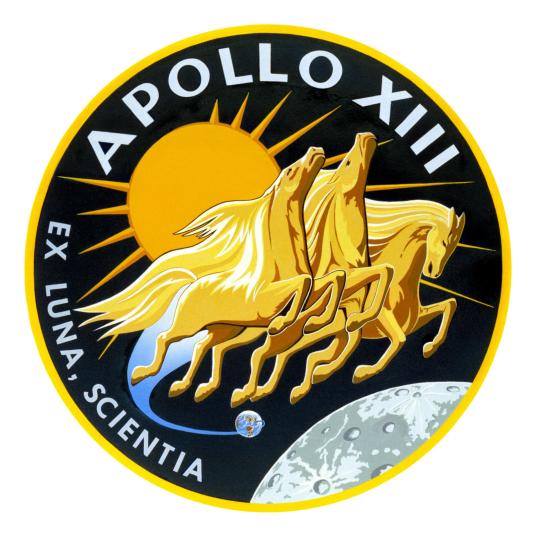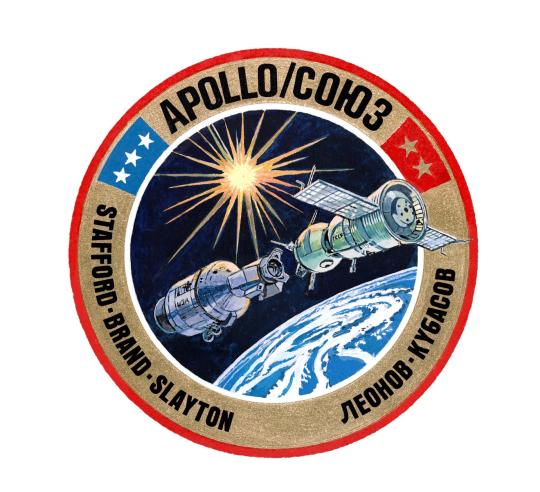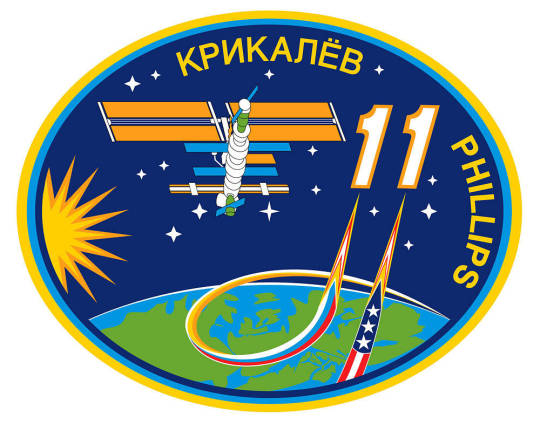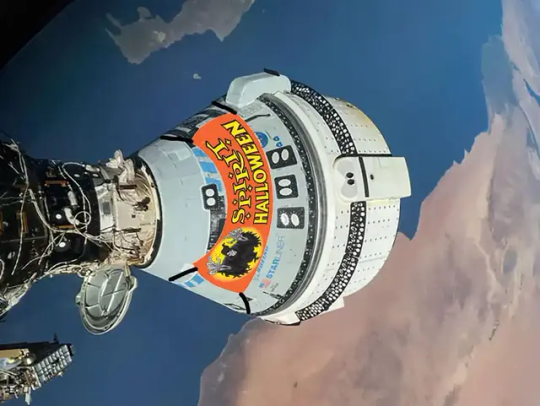#krikalev
Explore tagged Tumblr posts
Text
Kosmonaut zarobljen u svemiru tokom raspada Sovjetskog Saveza
Sovjetski kosmonaut Sergej Krikalev bio je zarobljen u svemiru tokom raspada Sovjetskog Saveza 26. decembra 1991. godine. Baikonur Kosmodrom, sa kojeg su Sovjeti lansirali svoje rakete, sada je pripadao novoosnovanom nezavisnom Kazahstanu, i tražili su ogromne takse za korišćenje njihovih objekata. U međuvremenu, ruska ekonomija se urušavala, pa su pokušali prikupiti sredstva prodajom putovanja…

View On WordPress
#15 država#311 dana u svemiru#Astronautika#Baikonur Kosmodrom#bajkonur#blijed kao brašno#Geopolitički prelom#herojstvo#izazov#kazahstan#kontrola misije#Kosmička istorija#kosmonaut#neophodne zalihe#povratak na zemlju#psihološki teret#raspad#raspad sovjetskog saveza#ruski kosmos#sergej krikalev#Sovjetska ekonomija#sovjetska rublja#Sovjetski kosmonaut#svemirska stanica#Svemirska stanica Mir#Svemirske misije#zaboravljeni kosmonaut
0 notes
Note
Did you know this isn’t the first time an astronaut has been stranded in space? Sergei Krikalev was sent up by the USSR, which then disbanded while he was still in space, and they just kind of left him there for almost an entire additional year in the 90s.
41 notes
·
View notes
Text
It's interesting to think that while mob hasn't technically time traveled, he experienced a 6 whole extra months in his life that most people didn't. It feels so similar to time travel but he was just stuck in mind prison being tortured for half a year!!
Maybe it could count as a form of time travel. His body didn't go anywhere but his mind experienced a time dilation far exceeding that of Sergei Krikalev, the man that traveled .02 seconds into the future. Poor kid was 14 years old for 18 months!
48 notes
·
View notes
Text



Space Shuttle Discovery performing the R-bar pitch maneuver (RPM), also known as the rendezvous pitch maneuver, during its rendezvous with the International Space Station. The maneuver was performed by STS-114 commander, Eileen Collins. These images were taken by Cosmonaut Sergei Krikalev, ISS Expedition 11 commander, and astronaut John Phillips, science officer and flight engineer. July 28, 2005.
The RPM was developed by NASA engineers Steve Walker, Mark Schrock, and Jessica LoPresti in response to the Space Shuttle Columbia disaster as a way for the crew aboard the International Space Station to visually inspect the Space Shuttle for damage to its thermal protection system. The shuttle would approach the International Space Station and, staying approximately 600 feet from the station, perform a slow 360 degree pitch maneuver, exposing its underside to the ISS crew. After the maneuver was complete, the shuttle would close in and dock with the station.
NASA 1, 2, 3
41 notes
·
View notes
Text
“Krikalev was stranded on board the Mir during the dissolution of the Soviet Union. As the country that had sent him into space no longer existed, his return was delayed and he stayed in space for 311 consecutive days, twice as long as the mission had originally called for”
fent maradt
13 notes
·
View notes
Text

Icons, photographs, and spiritual books have found a permanent abode on the International Space Station, becoming beacons of hope and faith amidst the stars.
The first written icon to journey into space was the Valaam icon of the Mother of God, the blessing of the Valaam Archimandrite Methodius (Petrov). However, the Icon’s journey was not without its trials.

On the return trip, a dangerous oxygen leak threatened their lives. Renowned cosmonaut Sergei Krikalev, not knowing any prayers at the time, clung to the handwritten icon and prayed for divine intervention. Miraculously, the oxygen leak stopped and they landed safely on Earth.

[source]
20 notes
·
View notes
Link
ESA (European Space Agency) astronaut Samantha Cristoforetti pictured aboard the International Space Station on Dec. 20, 2014, during Expedition 42.Credit: NASA Crew members aboard the International Space Station celebrate the holiday season in a unique way while living and working at the orbiting laboratory. Each crew member, including the current Expedition 72, spends time enjoying the view of Earth from the space station, privately communicating with their friends and families, and sharing a joint meal with their expedition crewmates, while continuing experiments and station maintenance. This view of the rising Earth greeted the Apollo 8 astronauts William Ander, Frank Borman, and James Lovell on Dec. 24, 1968, as they approached from behind the Moon after the fourth nearside lunar orbit.Credit: NASA As the first crew to spend Christmas in space and leave Earth orbit, Apollo 8 astronauts Frank Borman, James Lovell, and William Anders, celebrated while circling the Moon in December 1968. The crew commemorated Christmas Eve by reading opening verses from the Bible’s Book of Genesis as they broadcast scenes of the lunar surface below. An estimated one billion people across 64 countries tuned in to the crew’s broadcast. Skylab 4 astronauts Gerald Carr, Edward Gibson, and William Pogue trim their homemade Christmas tree in December 1973. Credit: NASA In 1973, Skylab 4 astronauts Gerald Carr, Edward Gibson, and William Pogue celebrated Thanksgiving, Christmas, and New Year’s in space, as the first crew to spend the harvest festival and ring in the new year while in orbit. The crew built a homemade tree from leftover food containers, used colored decals as decorations, and topped it with a cardboard cutout in the shape of a comet. Carr and Pogue conducted a seven-hour spacewalk to change out film canisters and observe the passing Comet Kohoutek on Dec. 15, 1973. Once back inside the space station, the crew enjoyed a holiday dinner complete with fruitcake, communicated with their families, and opened presents. NASA astronaut Jeffrey Hoffman pictured with a dreidel during Hanukkah in December 1993.Credit: NASA After NASA launched the agency’s Hubble Space Telescope into Earth’s orbit in 1990, NASA sent a space shuttle crew on a mission, STS-61, to service the telescope. In 1993, NASA astronaut Jeffrey Hoffman celebrated Hanukkah after completing the third spacewalk of the servicing mission. Hoffman celebrated with a traveling menorah and dreidel. STS103-340-036 (19-27 December 1999) — Wearing Santa hats, astronauts John M. Grunsfeld and Steven L. Smith blend with the season for a brief celebration on the mid deck of the Space Shuttle Discovery. The interruption was very brief as the two mission specialists shortly went about completing their suit-up process in order to participate in STS-103 space walk activity, performing needed work on the Hubble Space Telescope (HST).Credit: NASA As NASA continued to support another Hubble Space Telescope servicing mission, the STS-103 crew celebrated the first space shuttle Christmas aboard Discovery in 1999. NASA astronauts Curtis Brown, Scott Kelly, Steven Smith, John Grunsfeld, and Michael Foale, along with ESA (European Space Agency) astronauts Jean-François Clervoy and Claude Nicollier enjoyed duck foie gras on Mexican tortillas, cassoulet, and salted pork with lentils. Smith and Grunsfeld completed repairs on the telescope during a spacewalk on Dec. 24, 1999, and at least one American astronaut has celebrated Christmas in space every year since. Expedition 1 crew members Yuri Gidzenko of Roscosmos, left, NASA astronaut William Shepherd, and Sergei Krikalev of Roscosmos reading a Christmas message in December 2000.Credit: NASA In November 2000, the arrival of Expedition 1 crew members, NASA astronaut William Shepherd and Roscosmos cosmonauts Yuri Gidzenko and Sergei Krikalev, aboard the International Space Station, marked the beginning of a continuous presence in space. As the first crew to celebrate the holiday season at the laboratorial outpost, they began the tradition of reading a goodwill message to those back on Earth. Shepherd honored a naval tradition of writing a poem as the first entry of the new year in the ship’s log. For more than 24 years, NASA has supported a continuous U.S. human presence aboard the International Space Station, through which astronauts have learned to live and work in space for extended periods of time. As NASA supports missions to and from the station, crew members have continued to celebrate the holidays in space. Expedition 4 crew members, NASA astronauts Daniel Bursch and Carl Walz, along with Roscosmos cosmonaut Yuri Onufriyenko, pose for a Christmas photo in December 2001. Credit: NASA Expedition 8 crew members, NASA astronaut Michael Foale, left, and Roscosmos cosmonaut Aleksandr Kaleri, right, celebrate Christmas in December 2003. Credit: NASA Expedition 10 crew members, Roscosmos cosmonaut Salizhan Sharipov, left, and NASA astronaut Leroy Chiao, right, celebrate New Year’s Eve in December 2004.Credit: NASA Expedition 12 crew members, Roscosmos cosmonaut Tokarev, left, and NASA astronaut William McArthur, pose with Christmas stockings in December 2005. NASA Expedition 14 crew members, Roscosmos cosmonaut Mikhail Tyurin, left, and NASA astronauts Michael Lopez-Alegria and Suni Williams pose wearing Santa hats in December 2006.Credit: NASA Expedition 16 crew members, Roscosmos cosmonaut Yuri Malenchenko, left, and NASA astronauts Peggy Whitson and Daniel Tani, with Christmas stockings and presents in December 2007. Expedition 18 crew members enjoy Christmas dinner in December 2008. Expedition 22 crew members gather around the dinner table in December 2009.Credit: NASA Expedition 26 crew members celebrates New Year’s Eve in December 2010.Credit: NASA Expedition 30 crew members pictured in December 2011.Credit: NASA Expedition 34 crew members pictured in December 2012. Credit: NASA Expedition 42 crew members leave milk and cookies for Santa and hang stockings using the airlock as a makeshift chimney in December 2013.Credit: NASA Expedition 50 crew members celebrate New Year’s Eve in December. Credit: NASA Expedition 54 crew member NASA astronaut Mark Vande Hei pictured as an elf for Christmas in December 2017.Credit: NASA Expedition 58 crew members inspect stockings for presents in December 2018 Expedition 61 crew member NASA astronaut Jessica Meir pictured with Hanukkah-themed socks in the cupola in December 2019. Expedition 61 crew members NASA astronauts Andrew Morgan, Christina Koch, and Jessica Meir, along with ESA (European Space Agency) astronaut Luca Parmitano share a holiday message on Dec. 23, 2019, from the International Space Station.Credit: NASA NASA astronaut Kayla Barron pictured with presents she wrapped for her crewmates in December 2021.Credit: NASA Expedition 68 crew members wear holiday outfits in December 2022.Credit: NASA Expedition 70 flight engineer NASA astronaut Jasmin Moghbeli’s husband and daughters made a felt menorah for her to celebrate Hanukkah during her mission. Since astronauts can’t light real candles aboard the space station, Moghbeli pinned felt “lights” for each night of the eight-day holiday. A dreidel spun in weightlessness will continue spinning until it comes in contact with another object but can’t land on any of its four faces. Expedition 70 crew members recorded a holiday message for those back on Earth. Expedition 70 NASA astronaut Jasmin Moghbeli’s felt menorah and dreidel that she used to celebrate Hanukkah in December 2023. Credit: NASA NASA astronauts Don Pettit and Suni Williams, Expedition 72 flight engineer and commander respectively, pose for a fun holiday season portrait while speaking on a ham radio inside the International Space Station’s Columbus laboratory module. Credit: NASA To view this video please enable JavaScript, and consider upgrading to a web browser that supports HTML5 videoExpedition 72 video holiday message from the International Space Station. Credit: NASA The International Space Station is a convergence of science, technology, and human innovation that enables research not possible on Earth. The orbiting laboratory is a springboard for developing a low Earth economy and NASA’s next great leaps in exploration, including missions to the Moon under the Artemis campaign and, ultimately, human exploration of Mars. Go here for more holiday memories onboard the space station. To learn more about the International Space Station, its research, and its crew, at: https://www.nasa.gov/station News Media Contacts: Claire O’Shea Headquarters, Washington 202-358-1100 claire.a.o’[email protected] Sandra JonesJohnson Space Center, [email protected]
4 notes
·
View notes
Note
1, 3, 8, 15
1 - fave astronaut(s)
Astronauts: David Scott, Gus Grissom, Thomas Stafford, Christa McAuliffe
Cosmonauts: Sergei Krikalev, Vladimir Komarov, Konstantin Feoktistov, Alexei Leonov, Yuri Gagarin
3 - fave mission patch(es)
Apollo 13

Apollo-Soyuz

ISS Expedition 11

8 - fave space book
Two Sides of the Moon by David Scott and Alexei Leonov. I have a copy that is signed by both of them!!
15 - what food would you most want aboard?
Oooh that's a good question. I'd say some fresh fruit, raspberries maybe.
Space Asks!
#ask#asks#space exploration#astronaut#astronauts#nasa#soviet union#ussr#russia#cosmonaut#космонавт#kaiyves
3 notes
·
View notes
Text
Events 2.3 (after 1940)
1943 – The SS Dorchester is sunk by a German U-boat. Only 230 of 902 men aboard survive. 1944 – World War II: During the Gilbert and Marshall Islands campaign, U.S. Army and Marine forces seize Kwajalein Atoll from the defending Japanese garrison. 1945 – World War II: As part of Operation Thunderclap, 1,000 B-17s of the Eighth Air Force bomb Berlin, a raid which kills between 2,500 and 3,000 and dehouses another 120,000. 1945 – World War II: The United States and the Philippine Commonwealth begin a month-long battle to retake Manila from Japan. 1953 – The Batepá massacre occurred in São Tomé when the colonial administration and Portuguese landowners unleashed a wave of violence against the native creoles known as forros. 1958 – Founding of the Benelux Economic Union, creating a testing ground for a later European Economic Community. 1959 – Rock and roll musicians Buddy Holly, Ritchie Valens, and J. P. "The Big Bopper" Richardson are killed in a plane crash along with the pilot near Clear Lake, Iowa, an event later known as The Day the Music Died. 1959 – Sixty-five people are killed when American Airlines Flight 320 crashes into the East River on approach to LaGuardia Airport in New York City. 1960 – British Prime Minister Harold Macmillan speaks of "a wind of change", signalling that his Government was likely to support decolonisation. 1961 – The United States Air Force begins Operation Looking Glass, and over the next 30 years, a "Doomsday Plane" is always in the air, with the capability of taking direct control of the United States' bombers and missiles in the event of the destruction of the SAC's command post. 1966 – The Soviet Union's Luna 9 becomes the first spacecraft to make a soft landing on the Moon, and the first spacecraft to take pictures from the surface of the Moon. 1971 – New York Police Officer Frank Serpico is shot during a drug bust in Brooklyn and survives to later testify against police corruption. 1972 – The first day of the seven-day 1972 Iran blizzard, which would kill at least 4,000 people, making it the deadliest snowstorm in history. 1984 – Doctor John Buster and a research team at Harbor-UCLA Medical Center in the United States announce history's first embryo transfer, from one woman to another resulting in a live birth. 1984 – Space Shuttle program: STS-41-B is launched using Space Shuttle Challenger. 1989 – After a stroke two weeks previously, South African President P. W. Botha resigns as leader of the National Party, but stays on as president for six more months. 1989 – A military coup overthrows Alfredo Stroessner, dictator of Paraguay since 1954. 1994 – Space Shuttle program: STS-60 is launched, carrying Sergei Krikalev, the first Russian cosmonaut to fly aboard the Shuttle. 1995 – Astronaut Eileen Collins becomes the first woman to pilot the Space Shuttle as mission STS-63 gets underway from Kennedy Space Center in Florida. 1998 – Cavalese cable car disaster: A United States military pilot causes the death of 20 people when his low-flying plane cuts the cable of a cable-car near Trento, Italy. 2005 – One hundred five people are killed when Kam Air Flight 904 crashes in the Pamir Mountains in Afghanistan. 2007 – A Baghdad market bombing kills at least 135 people and injures a further 339. 2014 – Two people are shot and killed and 29 students are taken hostage at a high school in Moscow, Russia. 2023 – 2023 Ohio train derailment: A freight train containing vinyl chloride and other hazardous materials derails and burns in East Palestine, Ohio, United States, releasing hydrogen chloride and phosgene into the air and contaminating the Ohio River.
0 notes
Text
We don't need a repeat of Krikalev.

At this point, might as well.
(in all seriousness, I wish Boeing would get their shit together.)
Posted on Facebook: link
455 notes
·
View notes
Text
History
March 26
March 26, 1979 - The Camp David Accord ended 30 years of warfare between Israel and Egypt. Prime Minster Menachem Begin of Israel and Egyptian President Anwar Sadat signed the treaty of mutual recognition and peace, fostered by U.S. President Jimmy Carter.
March 26, 1992 - Soviet Cosmonaut Serge Krikalev returned to a new country (Russia) after spending 313 days on board the Mir Space Station. During his stay in space, the Soviet Union (USSR) collapsed and became the Commonwealth of Independent States.
Birthday - American playwright Tennessee Williams (1911-1983) was born in Columbus, Mississippi. His works featured Southern settings and include; The Glass Menagerie, Night of the Iguana, and two Pulitzer Prize winning plays, A Streetcar Named Desire and Cat on a Hot Tin Roof .
0 notes
Text
0 notes
Text
✨✨| So the next time I worry about Svetlana’s backstory not being historically accurate, I just need to remind myself that the Soviet Union’s dissolution straight up left a cosmonaut stuck in space.
His name is Sergei Krikalev, and during this time in which he was in space, the military almost ordered a warrant for his desertion, before realizing that he was otherwise indisposed. What was supposed to be a 144 day mission become more than 300, and the best part? He went back to space after this!
Svetlana died up there and she still wants to go back. What is it about space that just has this death grip on people???
#✨ from the mortal realm (ooc)#I’ve never been to space nkt do I want to#but even it has the grip on me!#what is it about it that people who like space LIKE space#🪐 svetlana | count the stars inside your eyes
1 note
·
View note
Text
Russia will continue supporting the International Space Station until 2028
Russia has formally agreed to remain aboard the International Space Station (ISS) until 2028, NASA has announced. Yuri Borisov, the Director General of Roscosmos, previously said that the country was pulling out of the ISS after 2024 so it can focus on building its own space station. “After 2024” is pretty vague, though, and even Roscosmos official Sergei Krikalev said it could mean 2025, 2028 or…

View On WordPress
0 notes
Text
Roscosmos Says Soyuz MS-23 Spacecraft Will Have Several Attempts To Dock With ISS
MOSCOW (UrduPoint News / Sputnik – 22nd February, 2023) The Soyuz MS-23 spacecraft will have enough fuel to make numerous attempts to dock with the International Space Station (ISS) if it fails to do so on the first try, Sergey Krikalev, executive director for Russian state space corporation Roscosmos’ manned programs, said on Wednesday. The Soyuz MS-23 will be sent to the ISS uncrewed on…

View On WordPress
0 notes
